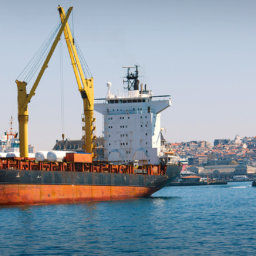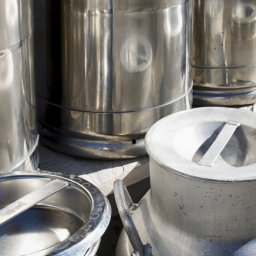After the cycling community experienced a wave of “fixies,” or fixed gear bikes in the mid-2000s, the community has grown by almost 50 percent. Bike commuting has increased by 46 percent in the U.S. since 2005, and as that growth continues today, steel’s influence on cycling is on the rise once again. Once touted for is light weight, carbon fiber saw its way onto the cycling scene; however, with a shorter lifespan and creation of greenhouse gas emissions during production, it falls into disfavor with those who ride to be eco-friendly.
Steel is a reliable material for building everything from buildings to bridges to bicycles. It’s easy to work with and cost-efficient. Due to steel’s comfort, strength and cost-efficiency, cycling enthusiasts are returning to steel frames, in what is being referred to as the steel frame renaissance. It’s safe to say that there’s never been a more successful material ever used for building frames.
Frames for Everyday Riders Steel tubing was introduced to cycling in the 1870s. It remained the only viable frame material until aluminum became popular, briefly in the 1990s. In the late 1990s, carbon fiber began its reign. Carbon fiber frames were legitimized by the influence of the Tour de France in 2014. Casual riders have been following the lead of professional racers, buying aluminum, carbon fiber and titanium frames for everyday use.
Steel tubing was introduced to cycling in the 1870s. It remained the only viable frame material until aluminum became popular, briefly in the 1990s. In the late 1990s, carbon fiber began its reign. Carbon fiber frames were legitimized by the influence of the Tour de France in 2014. Casual riders have been following the lead of professional racers, buying aluminum, carbon fiber and titanium frames for everyday use.
While newer materials excel in speed, lightness and stiffness, they fall short in comfort, durability and cost-efficiency. An aluminum bike, while lightweight, can have an uncomfortable ride quality, stiff and unforgiving. The rider will most likely feel every bump. Carbon fiber has a short lifespan, and does not always survive crashes, often exploding on impact.
In comparison, steel frame bikes are more practical for everyday riders. They’re heavier than aluminum and carbon fiber, but new frame-building techniques are being developed to reduce the weight of steel frames. Steel frames can also be customized without the same cost commitment as carbon fiber.
Steel has also replaced aluminum in wheel rims. Carbon fiber’s strength, lightness and the design flexibility has been praised for use in rims, but unlike steel or aluminum, carbon fiber does not bend in crashes. Rather, carbon steel has a tendency to shatter on impact, which can mean more injury.
Why Steel Frames? Custom Fit: Today’s production carbon bikes are not custom fit for each rider. Though one of the big advantages of carbon is shock absorption, most frames are designed for a standard rider of 220 pounds. If the rider is under the standard weight, the ride can be very stiff, leading to unpredictable handling and lack of control for an inexperienced rider. On the other hand, a custom-made steel bike is designed and built exactly to the rider’s specifications. A far better fit, but significantly better handling, compliance and ride quality.
Custom Fit: Today’s production carbon bikes are not custom fit for each rider. Though one of the big advantages of carbon is shock absorption, most frames are designed for a standard rider of 220 pounds. If the rider is under the standard weight, the ride can be very stiff, leading to unpredictable handling and lack of control for an inexperienced rider. On the other hand, a custom-made steel bike is designed and built exactly to the rider’s specifications. A far better fit, but significantly better handling, compliance and ride quality.
Last a Lifetime: While carbon fiber looks great, it cannot stand the test of time like a custom-built steel frame. Hand-carved stainless steel lugs, fillet brazed tubing and accents provide personalization than mass-produced carbon frames. Cyclists can expect to ride their custom steel frames for up to 100 hours, according to steel frame builders.
Minimal Weight Difference: The perception is that carbon’s greatest advantage is its weight, but the difference is exaggerated. Advanced technology for steel production is also reducing the weight of steel frames. Thinner-wall tubing provides light weight strength. While carbon frames can be under two pounds, the lightest steel frame is around three pounds. What you get from the extra pound of weight is stability and a smoother ride.
Durability: Steel has been used for bike frames since their inception, and one of the main reasons is because of its durability. Evidenced by bikes built 50 to 100 years ago still on the streets today, steel is truly a material that lasts a lifetime. Steel frames can also handle over-tightening bolts, unlike unforgiving carbon fiber.
Value: With the same money spent on a mass produced carbon fiber frame, which will not last as long, you can get a custom built steel frame bike made specifically to fit your height and weight. Steel is durable and you can be confident that your bike will last through your lifetime.
Safe and Sustainable
 Steel has never been stronger, lighter and more durable than it is today. No other material can offer the versatility to custom build a bike which fits its rider perfectly, and lasts a lifetime, adding to the sustainable production of a mode of transportation that also is also a major part of sustainable living. The use of bikes reduces pollution and producing steel frames does not create greenhouse emissions. The ability to ride the same bike, and even resell them for reuse also contribute to the sustainability of cycling.
Steel has never been stronger, lighter and more durable than it is today. No other material can offer the versatility to custom build a bike which fits its rider perfectly, and lasts a lifetime, adding to the sustainable production of a mode of transportation that also is also a major part of sustainable living. The use of bikes reduces pollution and producing steel frames does not create greenhouse emissions. The ability to ride the same bike, and even resell them for reuse also contribute to the sustainability of cycling.













